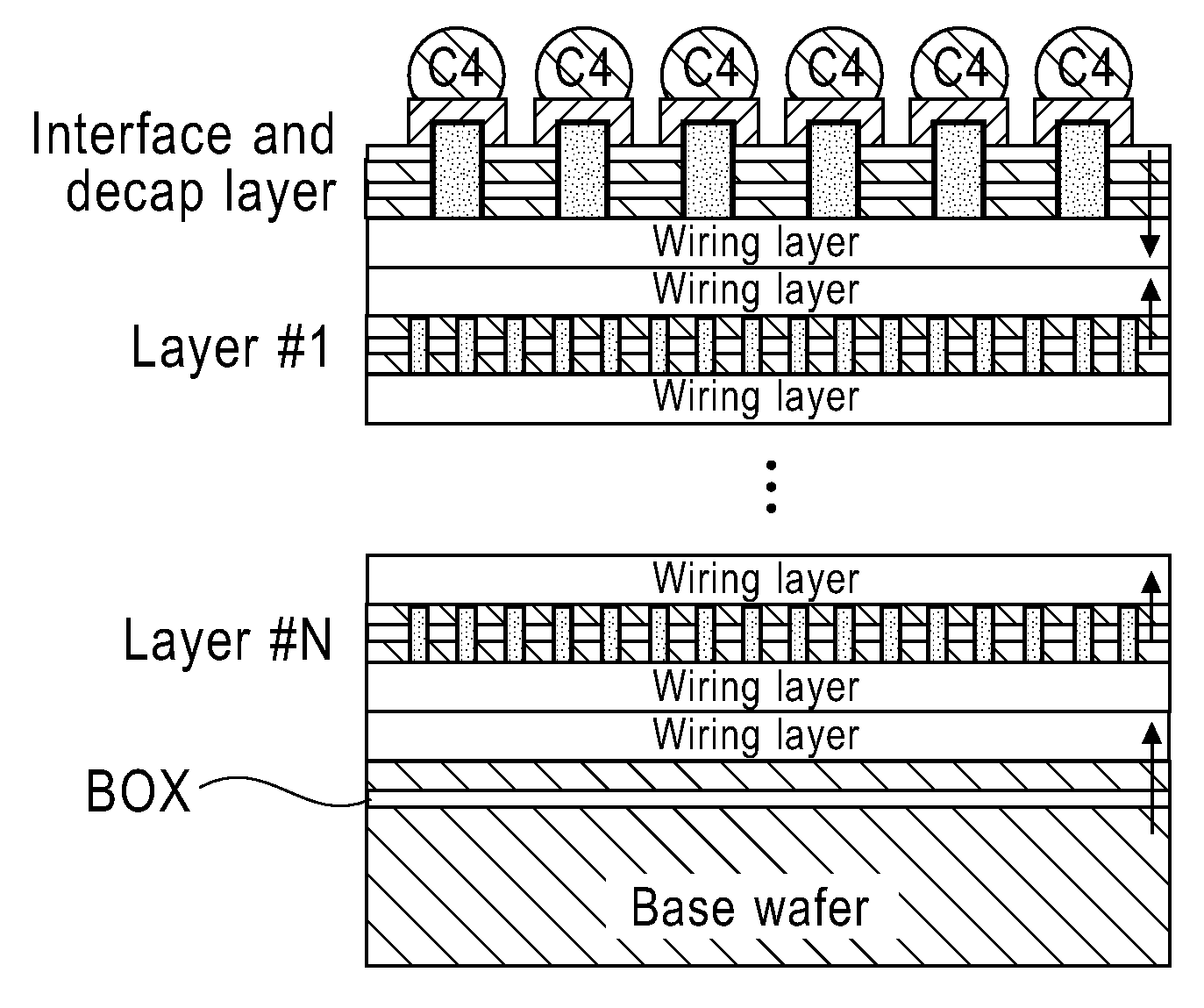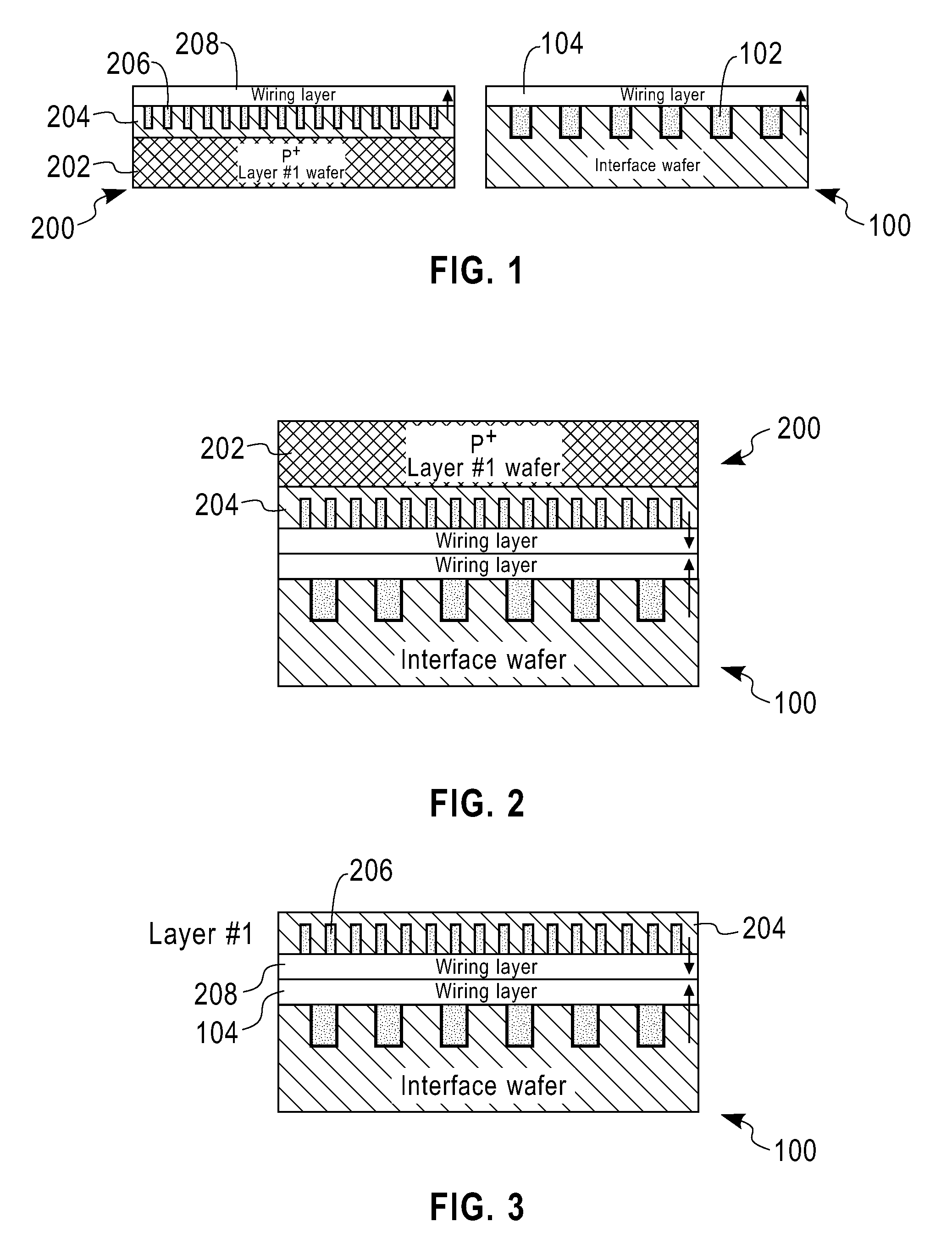3D integrated circuit device fabrication with precisely controllable substrate removal
a technology of integrated circuit devices and fabrication techniques, applied in semiconductor devices, instruments, computing, etc., can solve the problems of general purpose substrate thinning techniques that do not allow the production of final substrates, and only work for silicon-on-insulator (soi) wafers, and achieve the effect of not working for soi circuits having structures
- Summary
- Abstract
- Description
- Claims
- Application Information
AI Technical Summary
Benefits of technology
Problems solved by technology
Method used
Image
Examples
Embodiment Construction
[0016]Preferred embodiments of the present invention will be described in detail hereinbelow with reference to the attached drawings.
[0017]Embodiments of the present invention allow precisely controllable substrate removal during three-dimensional (3D) integrated circuit device fabrication by utilizing a P+ / P− substrate. The P+ / P− substrate is a P+ wafer that has a P− top active layer. In one exemplary embodiment, the P− top active layer is grown epitaxially on a P+ wafer and has a thickness of between about 5 and 20 microns. The P+ wafer and P− top active layer of the P+ / P− substrate allow controllable substrate removal down to very thin layers. Thus, the present invention overcomes the problem of a lack of controllable substrate thinning that is present in the known and previously proposed substrate thinning techniques for 3D integrated circuits. The controllability of substrate removal in the present invention allows low aspect ratio vias that can be filled with copper, so as to ...
PUM
 Login to View More
Login to View More Abstract
Description
Claims
Application Information
 Login to View More
Login to View More - R&D
- Intellectual Property
- Life Sciences
- Materials
- Tech Scout
- Unparalleled Data Quality
- Higher Quality Content
- 60% Fewer Hallucinations
Browse by: Latest US Patents, China's latest patents, Technical Efficacy Thesaurus, Application Domain, Technology Topic, Popular Technical Reports.
© 2025 PatSnap. All rights reserved.Legal|Privacy policy|Modern Slavery Act Transparency Statement|Sitemap|About US| Contact US: help@patsnap.com



